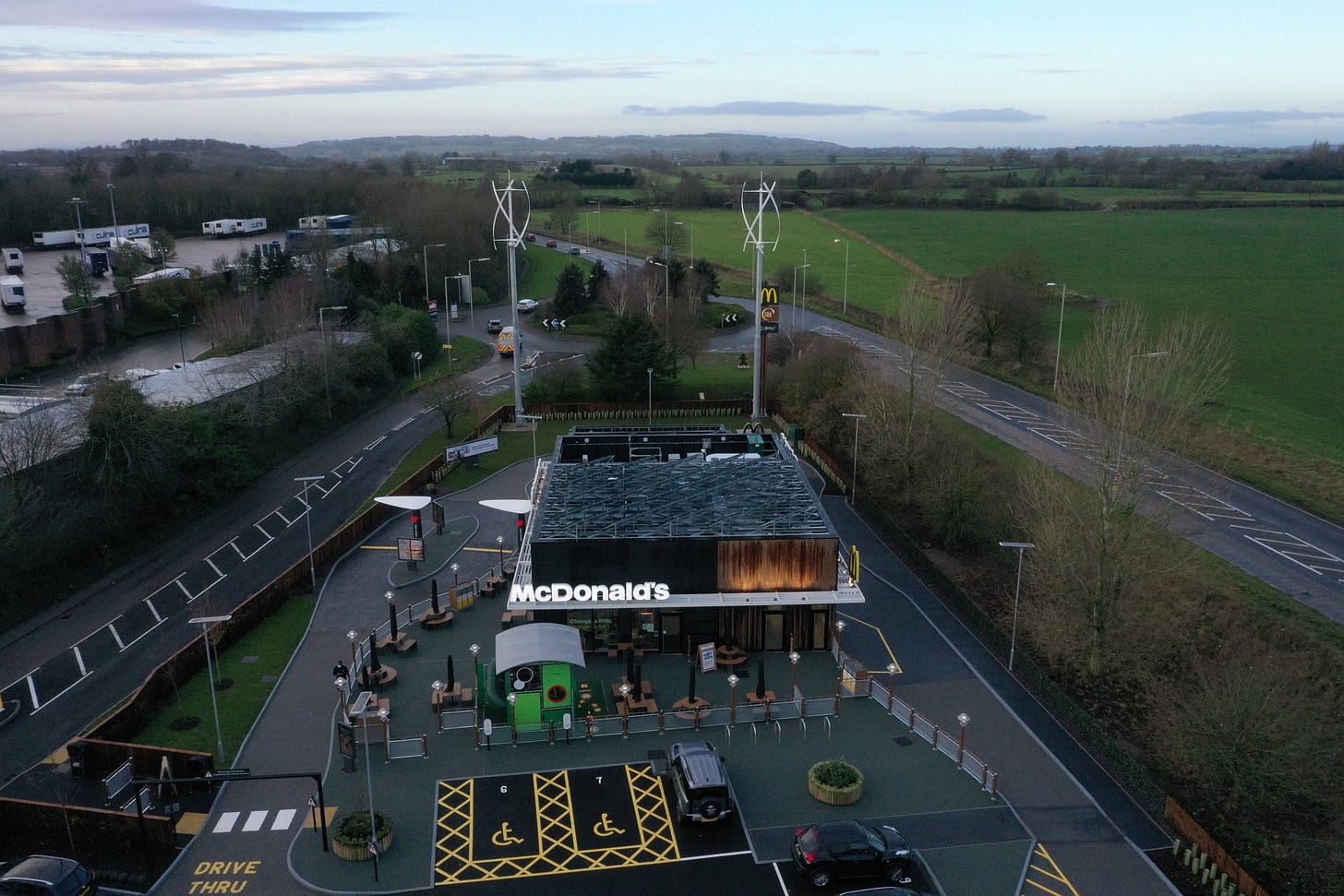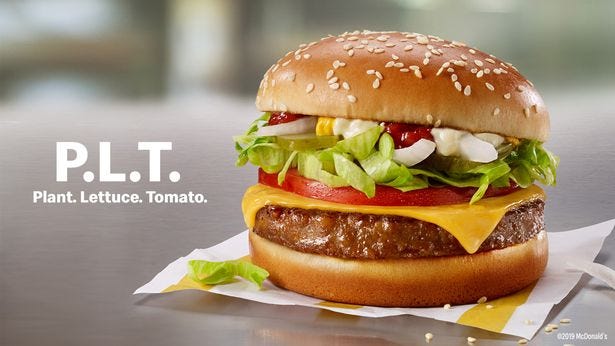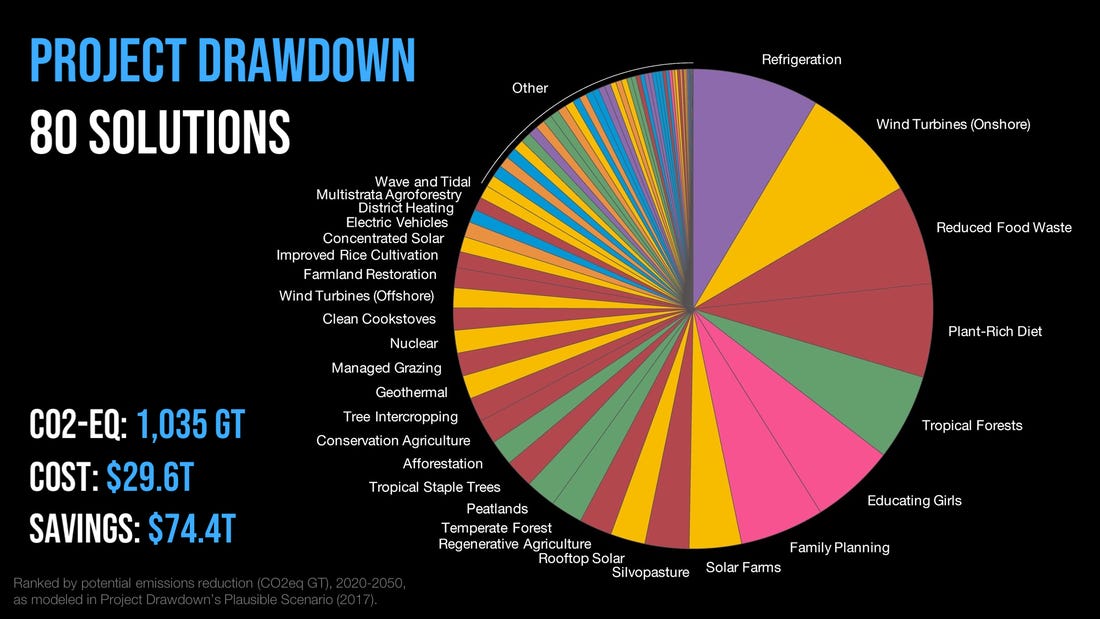Too many marketers are complicit in business as usual green cover-ups.
Customer emissions is the next big frontier in carbon reduction.
We need an open-source catalogue of proven climate-friendly behavioural interventions.
Next generation marketers are obsessed with shaping behaviour not just shaping the narrative.
I’ve spent a lot of my free time lately looking into climate change and specifically what businesses can do to help slow it down or more likely, prepare for what comes next. Long story short, despite lots of positive noises we’re doing nowhere near enough to make the sort of dent we need to make.
At my core I’m a marketer and despite no shortage of goodwill, as well as the brave efforts of people like the Purpose Disruptors, I’m disappointed by the small ambition and lack of heavyweight impact from the marketing community.
Sure there’s a lot of ‘green communications’ type work going on. But while well-intentioned or perhaps naïve, too many of these first generation initiatives have actually helped draw a ‘green veil' across the face of otherwise unchanged businesses.
If you want to get deeper into this see Ed Gillespie’s excellent and powerful piece the Omertà of Consultancy.
“After two decades in sustainability consulting what I fear is that we are not only failing to change much, but that as consultants we are actually part of the problem, providing a polished cover for what is broadly business as usual incremental change, whilst simultaneously eroding both the edge and substance of the essential radical shift that is really needed. The public licence to operate is sustained. It is our collective futures which are eroded.”
Ed Gillespie
Initially I drew comfort from the ever-increasing volume of ESG (Environmental, Social and Governance) reporting standards. But this excellent data-driven Bloomberg investigation reveals the true extent of the ESG mirage. Without careful scrutiny, the ESG gold rush may be greenwashing the economic system and in the process “creating a deadly distraction” says Tariq Fancy, former Chief Investment Officer, Blackrock.
All of this may put you in a state of despair. But that is not my schtick. Instead I’m for clear-eyed, imaginative ambition because as a New York Times piece put it:
“Nihilism is a failure of imagination, the bleak, easy way out. We need to face the lives before us. We need to name the discontinuity: See, there it is, the tear in the universe created by our fear and greed. What we believed was the present is actually the past. We failed to keep pace with the future.”
New York Times 10th January 2022
Now a new generation must now take on the baton and deliver more honest, more powerful, more future-facing (and more painful) change. We have no choice.
Climate-friendly aspirations and sustainable choices
There is immense untapped marketing expertise and talent out there. Its superpower is the ability to create climate-friendly aspiration, to influence sustainable choices and to actually change behaviours, but this superpower is not currently being deployed effectively.
In short: We need to go a lot harder, using the best new marketing and design-derived thinking to actually help customers reduce their carbon emissions.
One of the blockers is that the marketing people, the sustainability people and the corporate affairs people sit in different teams inside companies, with separate budgets. Each is pursuing initiatives of varying value but in my experience they’re rarely joined-up. They likely don’t have a well-articulated, broadly-understood destination either. But silos aren’t the real problem here.
The real problem is insufficient ambition. People are patting themselves on the back because, for instance, they’ve reduced idling time at the factory, thus saving on energy use. But this is a tiny drop in the (rising) ocean relative to the total emissions their business creates. This little infographic below puts it so clearly:

Businesses are focusing hardest on just 10% of the emissions they are putting into the world.
The elephant in the emissions room is the customer.
Scope 3 emissions, or 'value chain emissions', represent all the indirect impacts upstream and downstream of an organisation. These often represent the largest source of greenhouse gas emissions and in some cases can account for up to 90% of the total carbon impact.
The majority of those come from the use of sold products in other words from customers and end users.
The sustainability community are working tirelessly to reduce direct emissions, to reduce the water stress their factories create, to decrease the power they drain from the grid, to electrify their fleets and minimise their packaging. There’s nothing wrong with any of that and we need it. But it’s moving deck chairs on the Titanic.
Emissions primarily come from the use (and abuse) of sold products. It’s not the cereal packaging that’s the problem, it’s the cow’s milk you pour all over your cereal and how much you scrape into the bin every morning . While reducing plastic in the packaging is easier to manage and measure, it categorically will not save us.
Let’s take a closer look at just one example, McDonald’s. According to their CDC filing, emissions from their offices and restaurants (scope 1) fell from 1.5m to 0.6m tonnes of CO2 in 2019. Bravo! In the US and UK they have recently launched a net zero restaurant.
But when you include Scope 3, McDonald’s total greenhouse gas emissions for 2019 were greater than those of either Portugal or Hungary at 54m tonnes, an increase of 7% in 4 years. That’s driven by their supply chain and the 7m cattle slaughtered each year.
So McDonald’s real ambition for change has to include partnering with customers, creating a universal aspiration for plant-based burgers. The current McPlant ad campaign looks like a good step in that direction.
What if a plant-based patty was the norm not the exception?
What if they helped customers not collect burgers at the drive-thru in their diesel-powered SUVs.
What if they found a way to reduce how much of over-ordered, uneaten food gets thrown in the trash?
How might they encourage replication of the McDonald’s experience at home with leftover mayo and small spice sachets?
How might they persuade die-hard meat fans to accept lab-cultivated beef?
How might they increase average order value whilst reducing the frequency of meat-based purchases?
That is what real ambition looks like.
What gets measured gets done
To be fair there are good reasons why firms haven’t taken more responsibility so far for their customers’ emissions. First off it’s hard to calculate. Let’s say you’re reducing the emissions associated with doing the laundry, who should claim responsibility for them?
Is it the washing machine manufacturer who launched a range of lower temperature wash programmes? Is it the detergent manufacturer who reformulated the powder to work at colder temperatures? Is it the denim manufacturer who urged you to wash your jeans only once every six months? Or is it even the enzyme producer who delivers to the detergent maker’s factories every week?
Answer: All of them.
But one thing’s for sure, when we come to explain to our kids how we destroyed the planet, saying we couldn’t work out precisely who was responsible won’t cut it.
It is hard to track what customers and end users are really doing. Sure you can run an attitude survey where you’ll discover that people would like to buy more sustainably. But there’s still a big (and over-claimed) gap between what people say and what they do.
To really torture that laundry example, if you want to see what’s really happening in the home, you’re going to want to see what temperature people are actually putting the machine on at. And you’ll want to know how often they’re doing the laundry. And whether all the laundry actually needs washing and what time of day / electricity tariff it’s being done at.
Those things are hard to measure. Hard but not impossible given the ambition to do it. Sensors and the IoT will help but there’s a tonne of work to do here. If we could apply just a fraction of the firepower that is currently dedicated to tracking ad clicks and point it instead at tracking sustainable behaviours we might get somewhere.
An open-source catalogue of behavioural interventions?
You’ll likely have heard of Project Drawdown. Paul Hawken and his colleagues researched and modelled the one hundred most substantive ways we can reverse global warming.
Has anyone created a database of successful quantified carbon-reduction strategies that change how people choose, consume and use the products they buy? If so, I haven’t found it yet, please advise!
We urgently need an open-source catalogue of behavioural interventions to draw global best practice together - this is one place where we need a bit of coopetition (I’m looking for a group of friends who want to make this real by the way, if that’s you, drop me a line).
A few neat examples I’ve come across recently:
Customers shun red meat after carbon footprints added to weekly shop receipts
How the language on a menu influences buyers in favour of plant-protein (with thanks to Owain Service)
The JUMP -A movement challenging consumers to live for joy, not stuff
Time to step-up
This post is already far longer than intended, so let’s cut to the chase: It’s time marketers stepped-up.
The next generation of marketers working on sustainability are moving beyond doomist thinking (yes, we’re in very, very deep trouble, now what are you going to do about it?) to an obsession with delivering genuine change.
Less shaping the narrative, more shaping behaviour.
Less ‘sustainability theatre’ workshops, more testing MSP (Minimal Sustainable Product).
Less internal focus and a lot more customer centricity.
Less risk management, more business model innovation.
Less reporting that reassures investors, more accurate measurement and responsibility for carbon being emitted.
In closing, we must do all we can to decouple growth from carbon emissions and unlearn the worst excesses of consumption behaviour. We need to 1) educate, 2) regulate and we need to 3) activate.
I’m starting by activating customers, unleashing the latent desire in all of us to reduce our carbon footprints through what we buy (or don’t buy), the choices we make and the habits we form.
Who’s in?
1. If you haven't already, subscribe to receive more like this
2. Please share this newsletter with your friends and colleagues
3. Drop me a line, I love hearing your thoughts, questions, suggestions
Leo Rayman has over 20 years working with leaders, from global household names to feisty startups, helping them grow and transform; from strategy, to brands, value propositions to products, marketing to organisational culture. He’s a former ad agency CEO and stratgey consultancy founder.








hi, in terms of open source catalog, this study is worth noting:
"..a meta-analysis of randomised controlled trials comprising 3,092,678 observations, which estimates the effects of behavioural interventions holding other factors constant. Here we show that behavioural interventions promote climate change mitigation to a very small degree while the intervention lasts, with no evidence of sustained positive effects once the intervention ends"
https://www.nature.com/articles/s41467-019-12457-2
This report is interesting on 'shallow', 'deep' and 'spiral' scaling, and the importance of "mindset change" which is in the end about narrative, I think knitting it altogether on specific projects will be key.
https://www.rapidtransition.org/wp-content/uploads/2021/04/Cambridge-Sustainability-Commission-on-Scaling-behaviour-change-report.pdf
Maybe seen HotorCool's 1.5 Degree Lifestyles Report, very clear evidence that ~70% HH footprint is energy, transport, food and home construction as areas of focus.
https://hotorcool.org/1-5-degree-lifestyles-report/